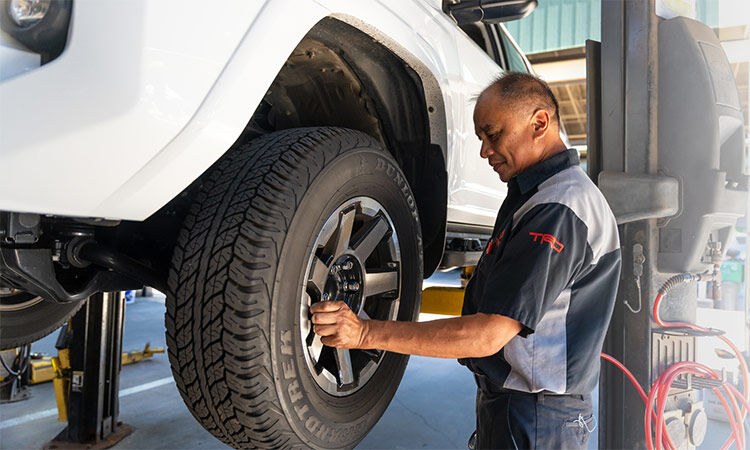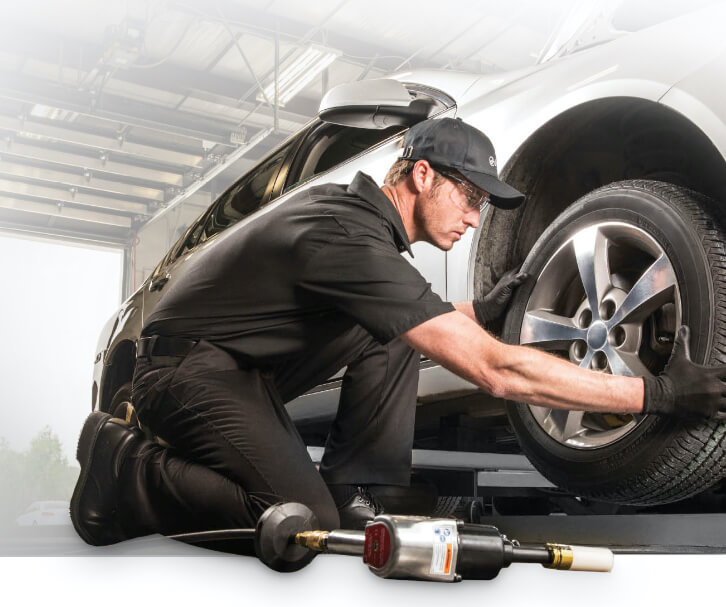Morris Tires: Where GMC Tire Service Fulfills Top Quality
Morris Tires: Where GMC Tire Service Fulfills Top Quality
Blog Article
Tire Solution: The Effect of Climate Conditions
When it pertains to ensuring ideal efficiency and safety on the roadway, recognizing the effect of climate condition on tire solution is vital. From scorching heat to icy roadways, each weather condition element can significantly affect tire functionality and general driving experience. By diving into the effects of differing climate condition on tires, chauffeurs can obtain beneficial understandings that might boost their car's performance and longevity. In this conversation, we will certainly check out the complex partnership between weather and tire solution, clarifying the significance of weather-specific tire maintenance practices and considerations.
Warm and Tire Performance
When subjected to heats, tires experience modifications in performance that can substantially affect lorry safety and handling. The warmth created from long term driving or heat conditions causes the tire rubber to soften, resulting in minimized step life and boosted wear. As the rubber comes to be softer, the tire's grip when driving reduces, influencing stopping distances and overall grip. In extreme instances, too much heat can also create tire blowouts, positioning a serious security threat to the car and its passengers.

Cold Climate Impacts
Winter conditions can have a substantial influence on tire performance and security. As temperature levels decline, tire rubber can set, leading to reduced grip on icy or snow-covered roadways. In winter, tires might also shed air stress a lot more swiftly, which can influence managing and fuel performance. Furthermore, chilly temperature levels can trigger tire sidewalls to stiffen, increasing the danger of damages from pits or various other road risks.
To minimize the results of winter on tires, it is crucial to frequently check tire stress and inflate them to the manufacturer's suggested degrees. Making use of winter season or all-season tires made for winter problems can likewise improve traction and hold on icy or snowy roads. Proper tire upkeep, consisting of normal assessments for wear and damage, ends up being also much more essential throughout chillier months to guarantee optimal performance and safety.
Rainy Conditions Effect
During rainy problems, tire performance and safety can be dramatically affected by the wet road surfaces and lowered exposure. The step pattern of tires plays a crucial function in preserving grip on damp roads. Tires with worn-out footsteps are extra prone to hydroplaning, where a layer of water accumulates between the tire and the road surface area, leading to loss why not try this out of traction. To combat this, motorists should frequently evaluate their tires for ample tread deepness and think about purchasing tires especially made for damp problems.
Moreover, rainy climate can also lower visibility, making it testing for motorists to see the roadway in advance plainly (GMC Tire Service). In such conditions, it is necessary to readjust driving rates appropriately and maintain a secure complying with distance to permit abrupt stops. Properly filled with air tires can likewise help in maintaining control on wet roadways by offering far better handling and grip
Snow and Tire Safety And Security
When driving in snowy conditions, having the page appropriate tires can make a substantial difference in security and efficiency. Wintertime tires are made with special rubber compounds and tread patterns to offer better traction on snow and ice compared to all-season tires.

It is essential to comply with maker instructions when installing and utilizing tire chains to avoid damage to the tires and car. By picking the ideal tires, keeping correct inflation, and taking into consideration extra grip help like tire chains, vehicle drivers can boost their safety and security when navigating snow-covered roadways.
Weather-Related Tire Maintenance
Weather-related tire maintenance incorporates an array of techniques intended at making certain ideal tire function and long life in different climate scenarios. One essential element of weather-related tire maintenance is tire stress guideline. Examining tire walk regularly and replacing tires when tread wear reaches a specific deepness is important for preserving traction and security in unfavorable weather condition.
Final Thought
In final thought, weather condition problems have a substantial impact on tire efficiency and safety. From warmth affecting tire pressure and wear to cool weather condition lowering grip, it is important to take into consideration the climate when maintaining and utilizing tires.
In this discussion, we will certainly discover over here the detailed relationship between climate conditions and tire service, losing light on the importance of weather-specific tire maintenance practices and considerations.

Report this page